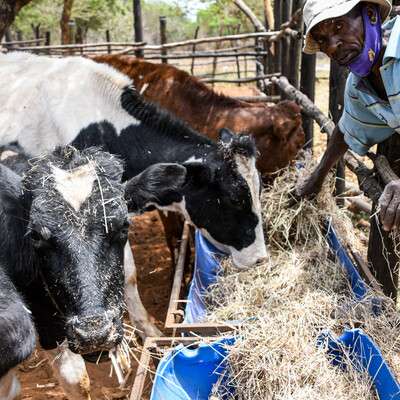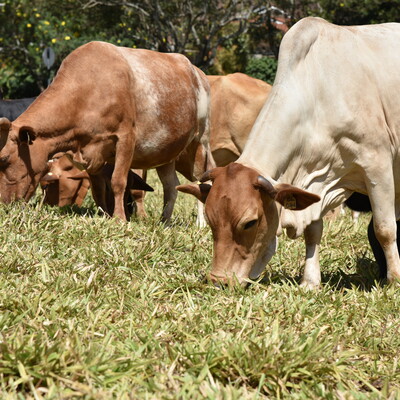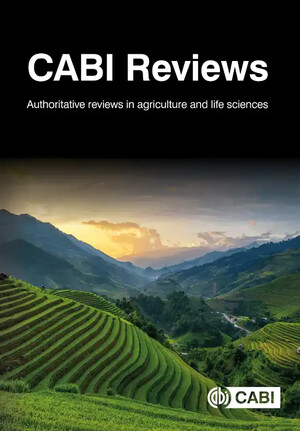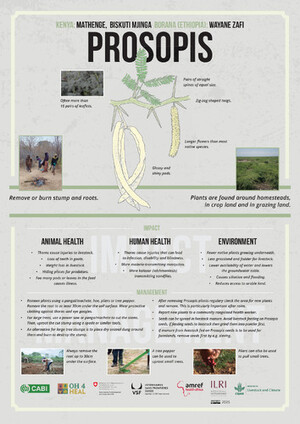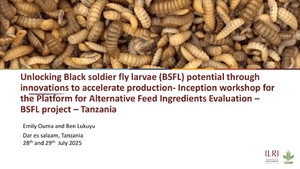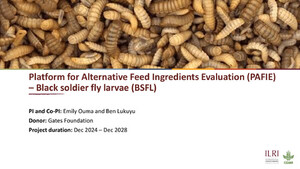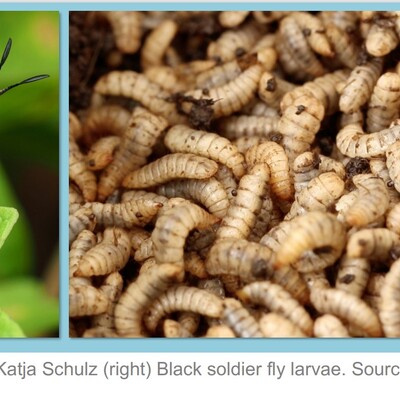
Establishing nutritional profiles of improved Brachiaria grass cultivars
Worldwide livestock contribute about 40% of agricultural gross domestic product and provide livelihoods and incomes for at least 1.3 billion people. Livestock are a source of employment, income, social status, and livelihoods for millions of African smallholder farmers. Moreover, livestock are a source of manure and traction for agriculture.
However, livestock productivity in sub-Saharan Africa is the lowest in the world, which reduces the profitability of the sector. Low productivity also raises the carbon footprint of animal-source foods. Among the major factors causing this are low quality feeds and shortage of feed supply, as well as compromised genetic potential and herd health.
Natural pasture, crop residues, planted forages, and feed grains are common sources of livestock feed used by farmers. However natural pasture and crop residues are low in nutritive values, and feed grains are less affordable to smallholder farmers in a food-insecure continent. Planted forages, which are less common in Africa, provide a great opportunity to improve livestock productivity and increase profitability.
Africa hosts tremendous diversity in tropical forages, some of which have successfully transformed livestock sectors in the tropical Americas, Australia, and elsewhere. African forages are high in biomass production, resilient to drought and poor fertility soils, and nutritious to livestock. However, African smallholder farmers are yet to realize the full benefits of their own native genetic forage resources.
To meet this need, the International Livestock Research Institute (ILRI) and partners have been engaged in the introduction, evaluations, and promotion of improved forages for adaptation, herbage production potential and livestock productivity. This includes the development of a set of technologies for climate-smart Brachiaria grass, which are currently benefiting over 100,000 households from 21 countries across Africa.
The initiative sought to provide data about the nutritional profiles of Brachiaria grass cultivars at different growth stages, and the effect of agroclimatic conditions on herbage qualities. An ideal animal diet should provide a balance of essential macronutrients such as crude protein and energy; minerals such as calcium and phosphorous, and overall macronutrients and mineral availability beyond the level needed to maintain normal body functions. A dairy cow fed on a balanced diet will be well-nourished, healthy and fertile, and cope better with nutritional stresses.
ILRI in collaboration with RuMeth International and RTI International conducted a study to establish the nutritional profiles of six improved Brachiaria grass cultivars—Basilisk, Cayman, Cobra, Mulato II, Piata and Xaraes—that are promoted by ILRI, the Alliance of Bioversity International and CIAT, and other partners across Africa.
The initial experiments were set up at the ILRI campus Nairobi (1795m above sea level) in August 2019. Between 22 September to 13 November 2020, researchers harvested regrowth at 10-day intervals from one-year-old stools, beginning at 20 days and finishing at 70 days. Samples were subjected to wet chemistry analysis (FW-3) at Soil Test Inc. Moses Lake, Washington, USA.
The data from the first cycle's harvest showed that crude protein content (CP) of cultivars ranged between 12.34% for Xaraes and 14.56% for the Cobra cultivar. Cobra, Mulato II, Cayman and Basilisk were similar for crude protein content. The metabolizable energy (ME) of cultivars ranged from 2.28% for Xaraes and 2.46% for Mulato II. CP and ME was greatly affected by plant age at harvest, as both parameters were greatly reduced after 40 days. Mineral content was also affected by age of regrowth at harvest, and cultivar type.
This preliminary study has provided baseline information for the nutritional profiles of six Brachiaria grass cultivars at different ages. More data covering multiple seasons in a year is being collected. We advise having studies spanning different agroecology zones so that information can be directly used for customized ration formulation and recommendations.
This initiative has been carried out by ILRI in collaboration with the National Agricultural Research System (NARS), working with the Rwanda Agriculture and Animal Resources Development Board (RAB), Rwanda; the Tanzania Livestock Research Institute (TALIRI), Tanzania; the Institute of Agricultural Research for Development (IRAD), Cameroon, the National Agricultural Study and Research Institute (INERA), the Democratic Republic of Congo; the Somali National University (SNU), Somalia; the University of Bahri (UoB), Sudan; and the Ministry of Livestock and Fisheries, Sudan, among others.
A representation of the harvesting done at different times of the year (photo credit: ILRI/Judy Kimani).
See below for related information:
Brachiaria grass: New forage option for sub-Saharan Africa
Brachiaria grass: The forage for more milk and meat production in sub-Saharan Africa
Brachiaria grass, a climate-smart ‘wonder grass’ for livestock farmers
Brachiaria grass
Urochloa (syn. Brachiaria) grass production manual
Why livestock matter






